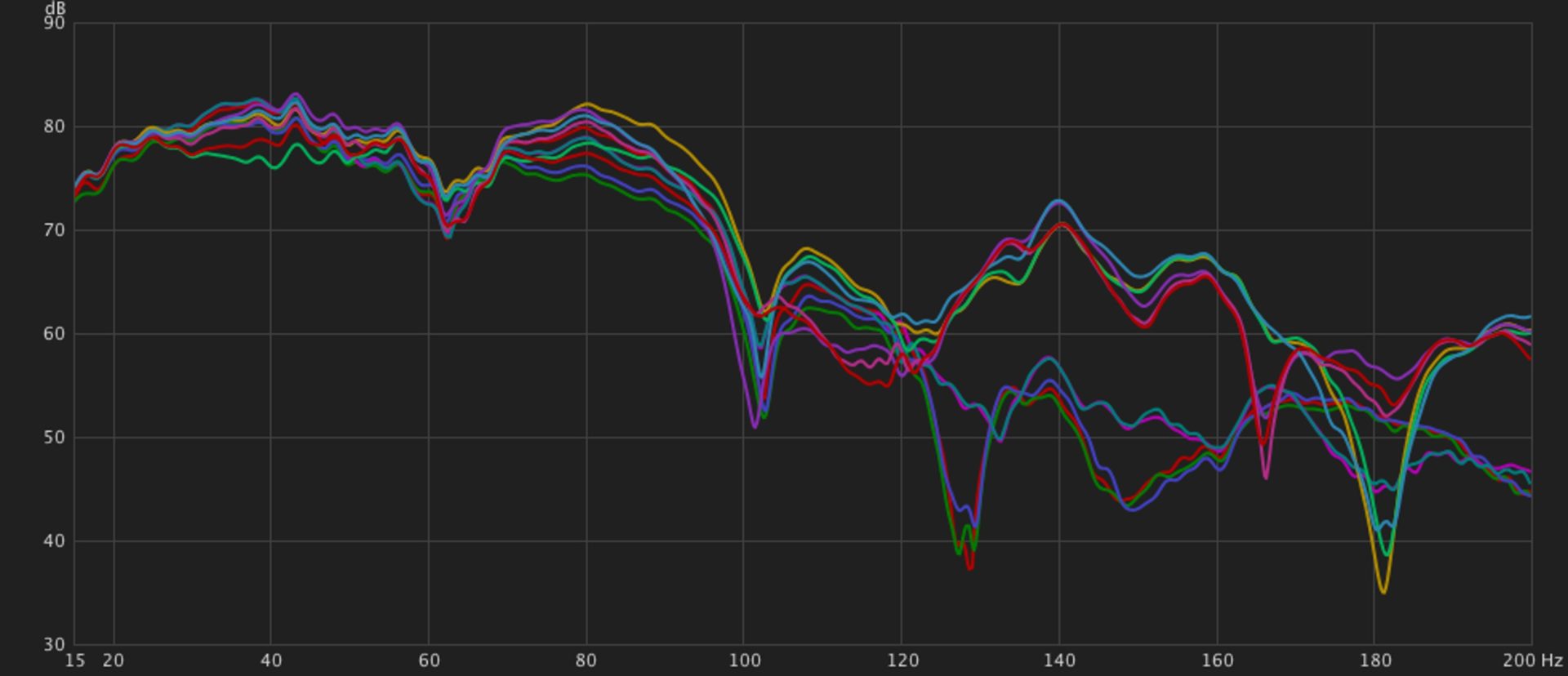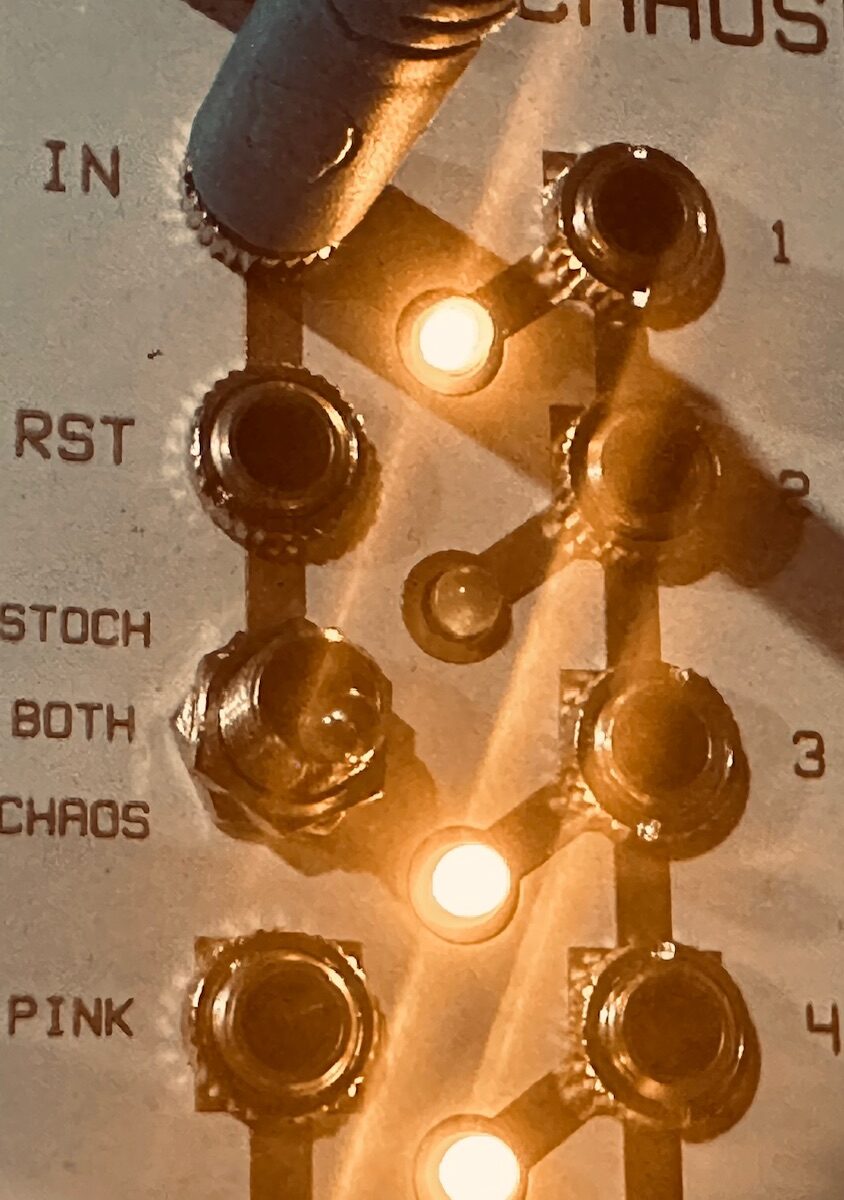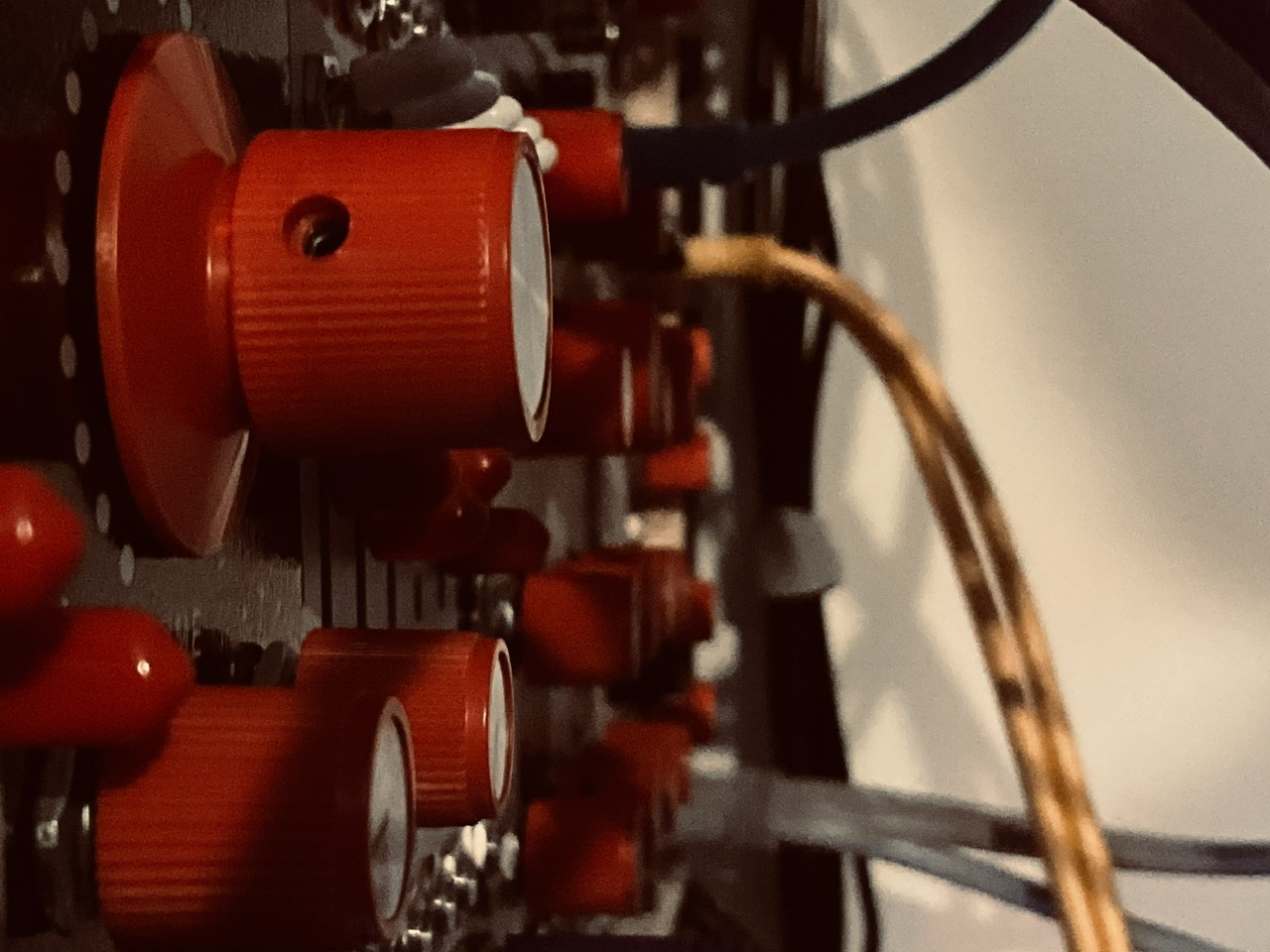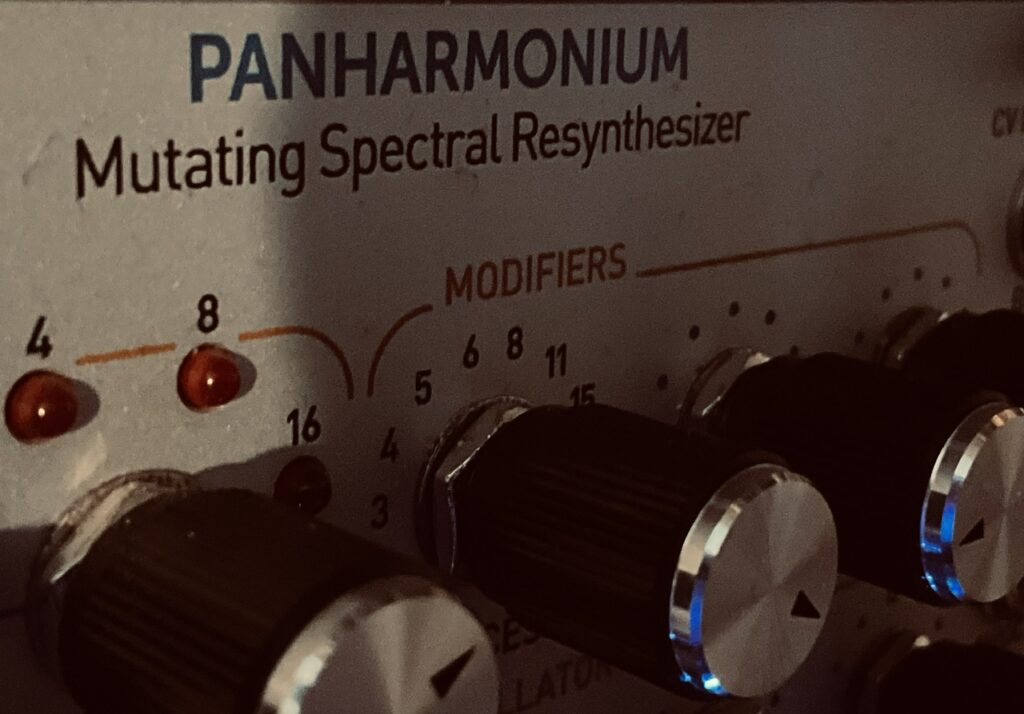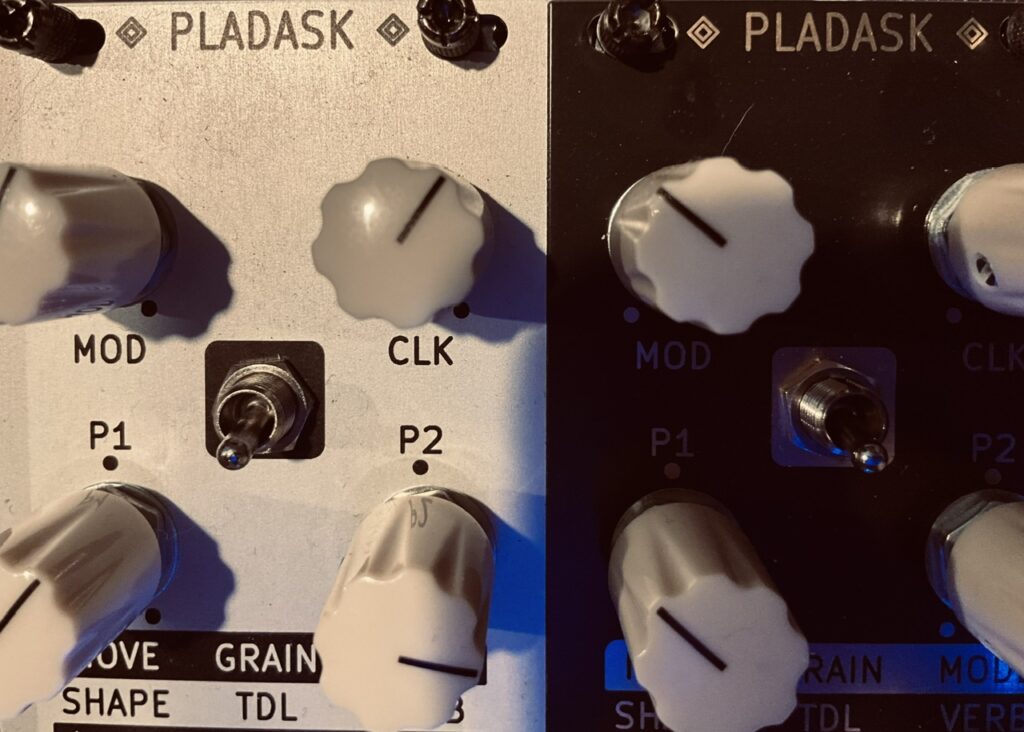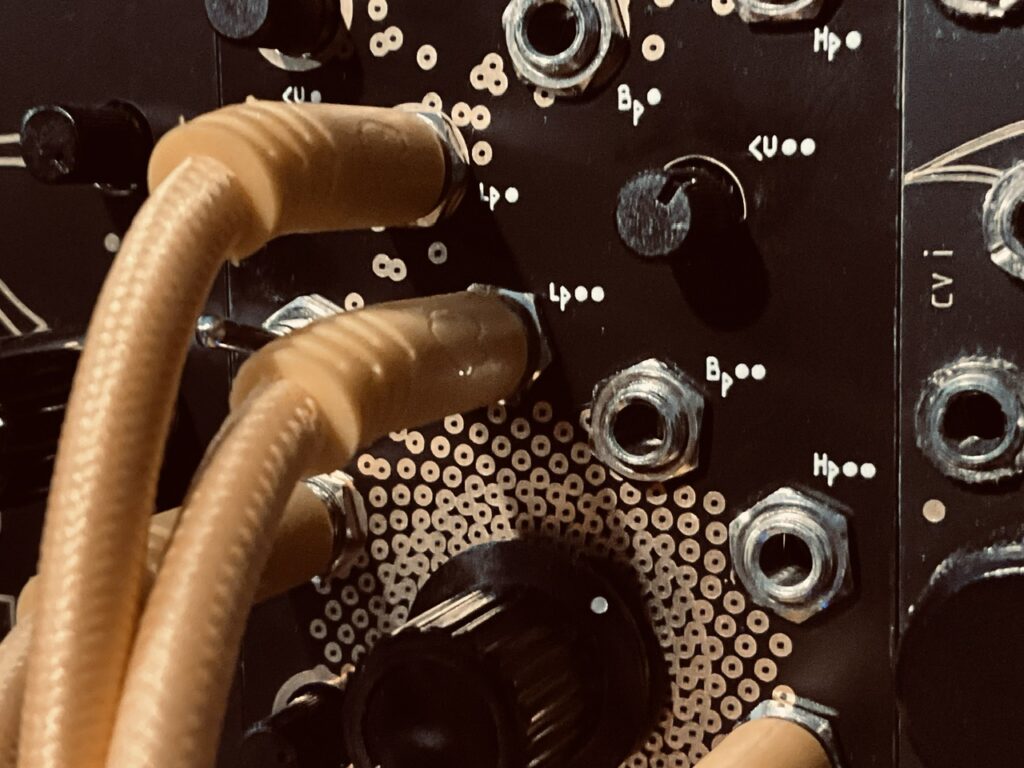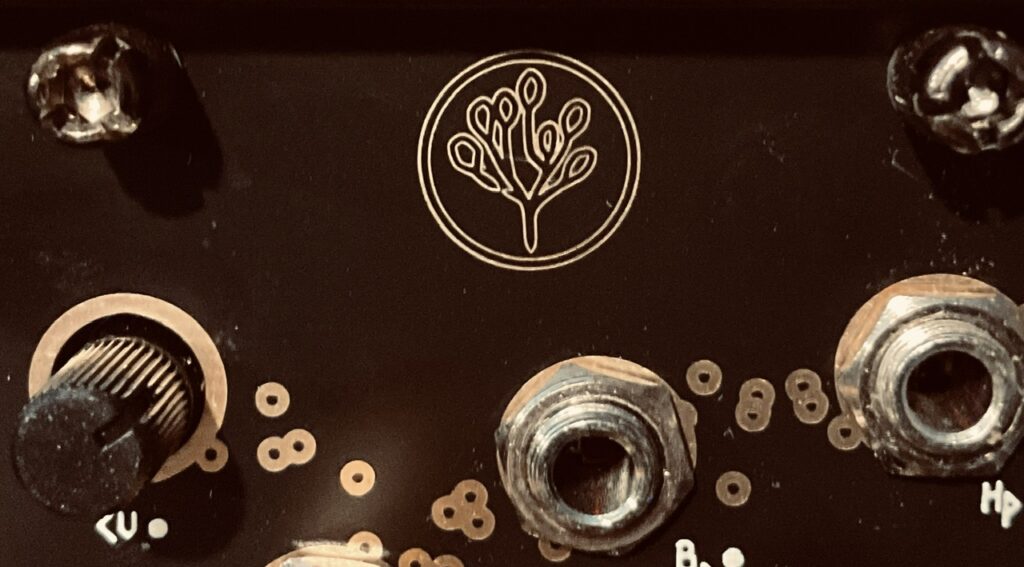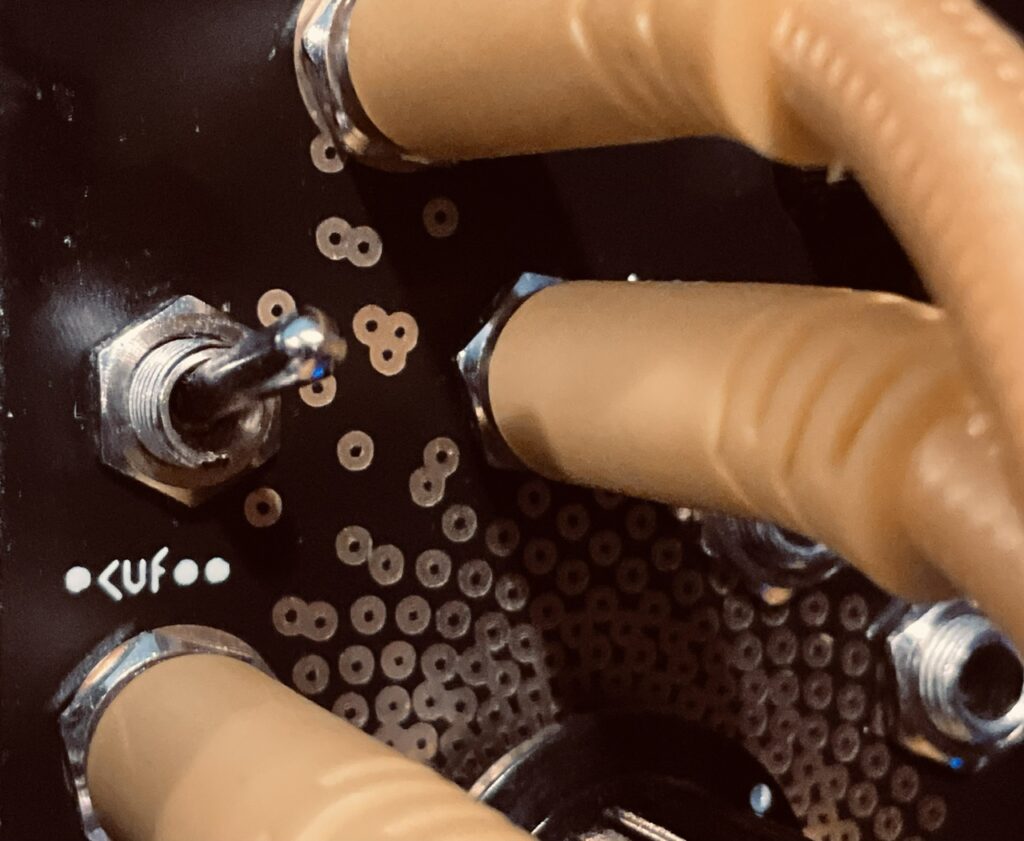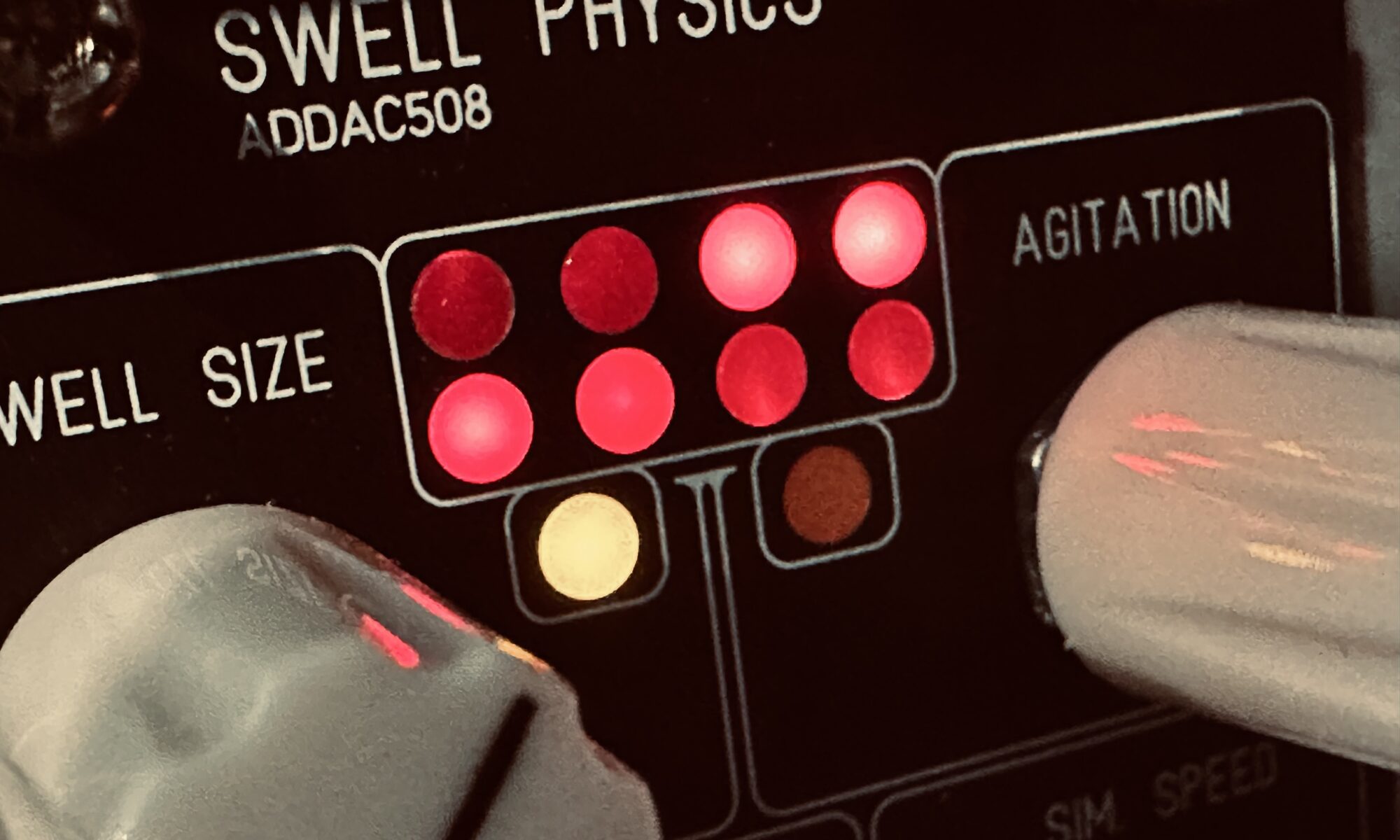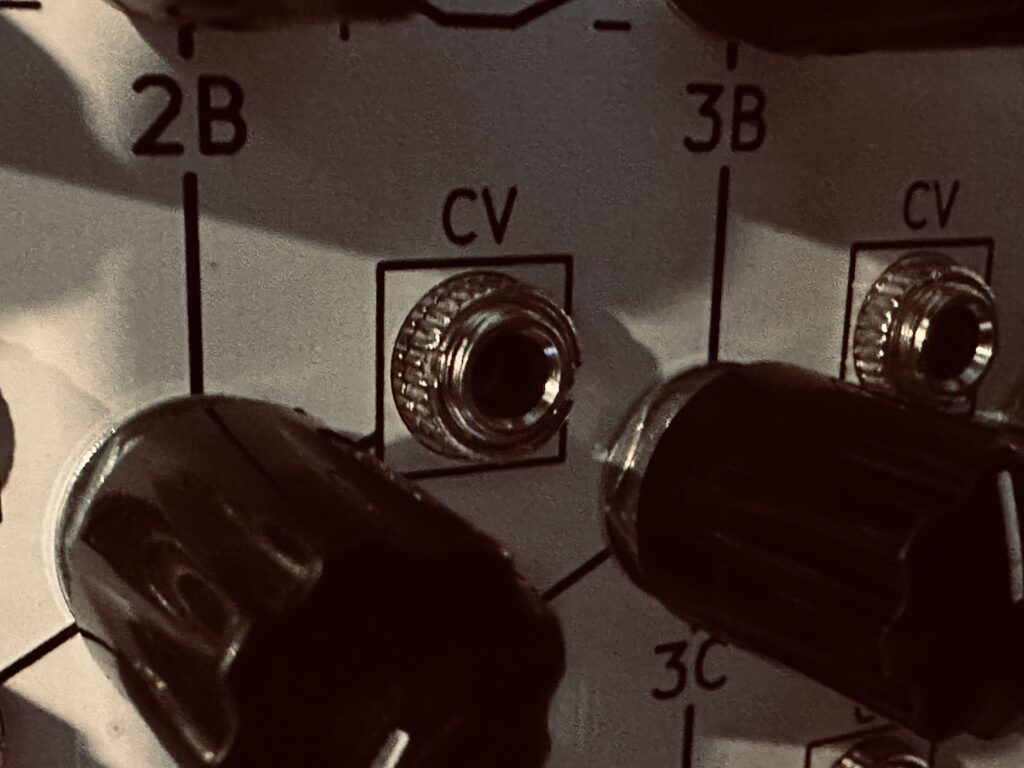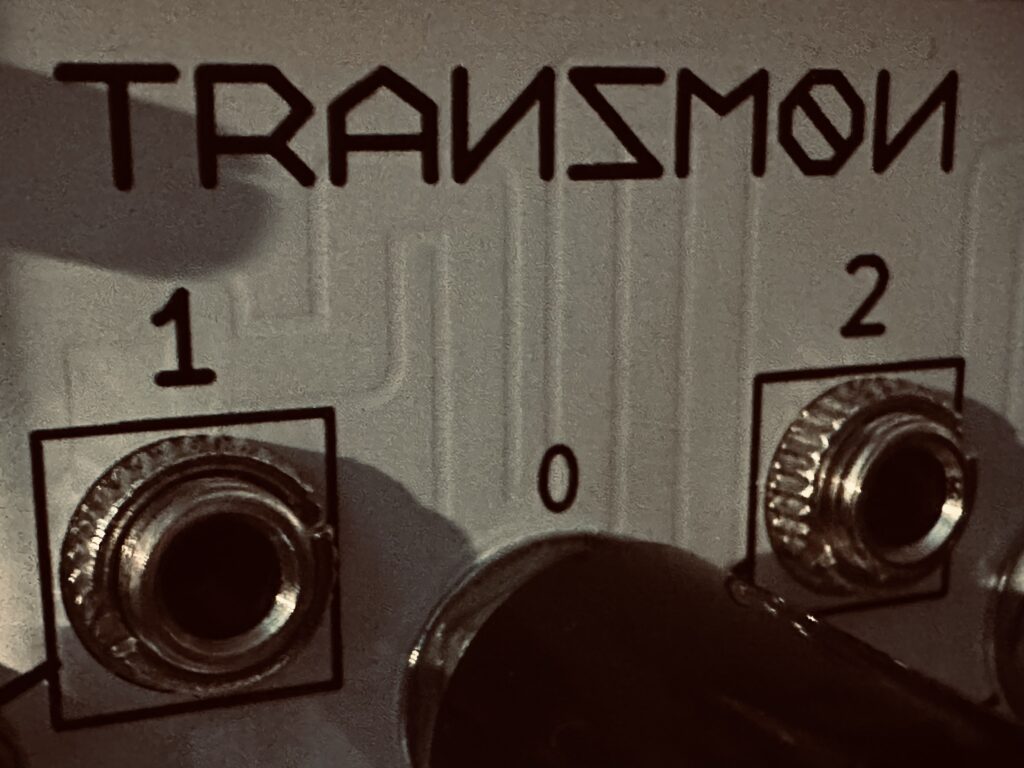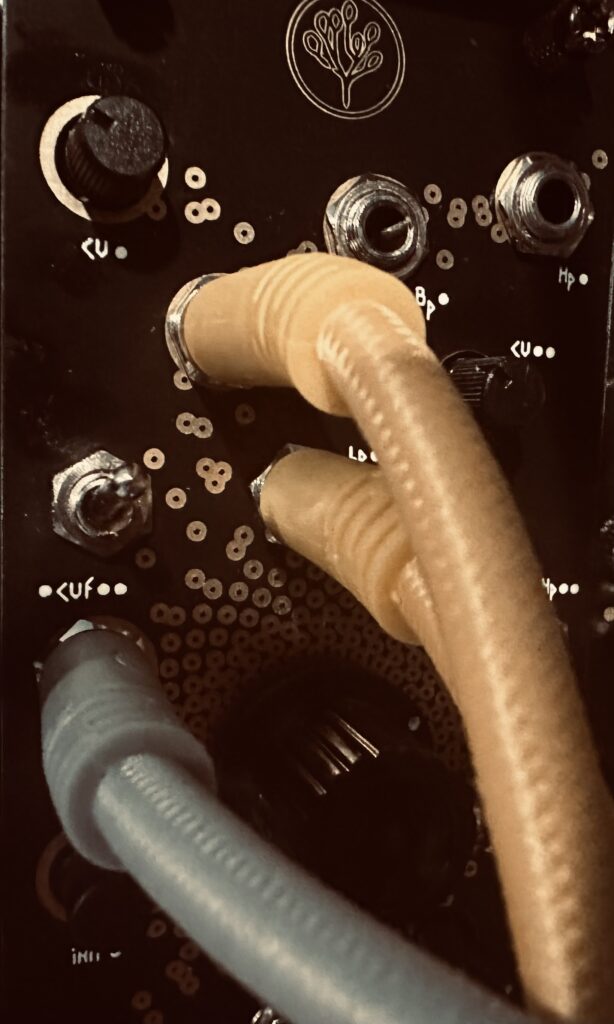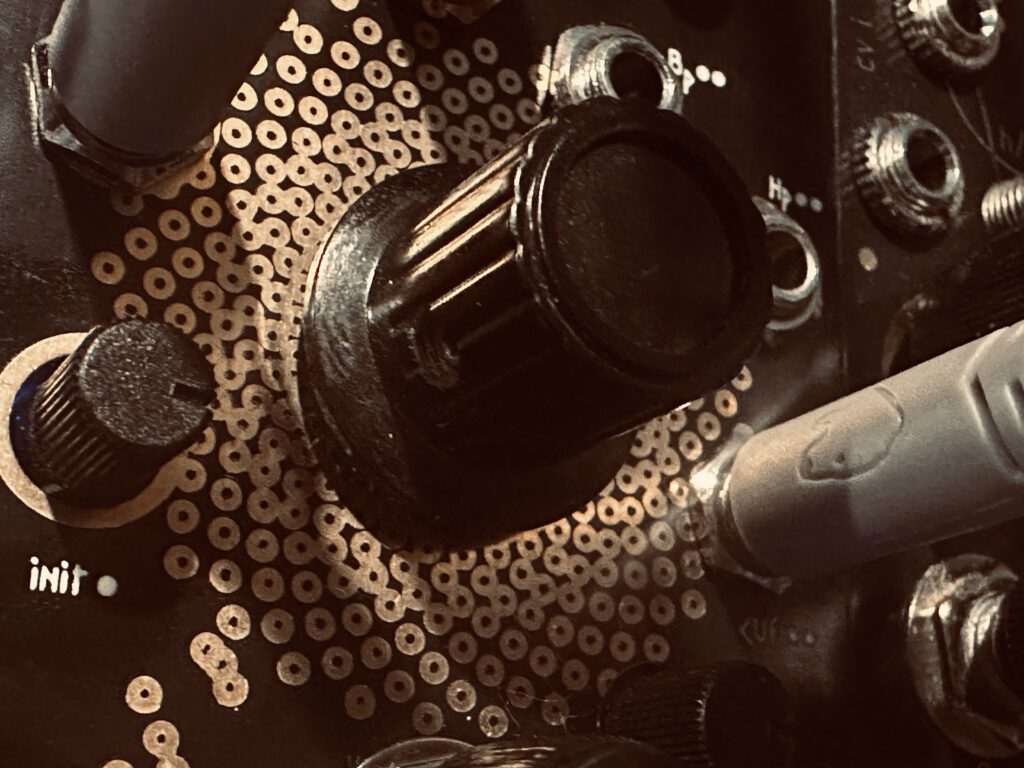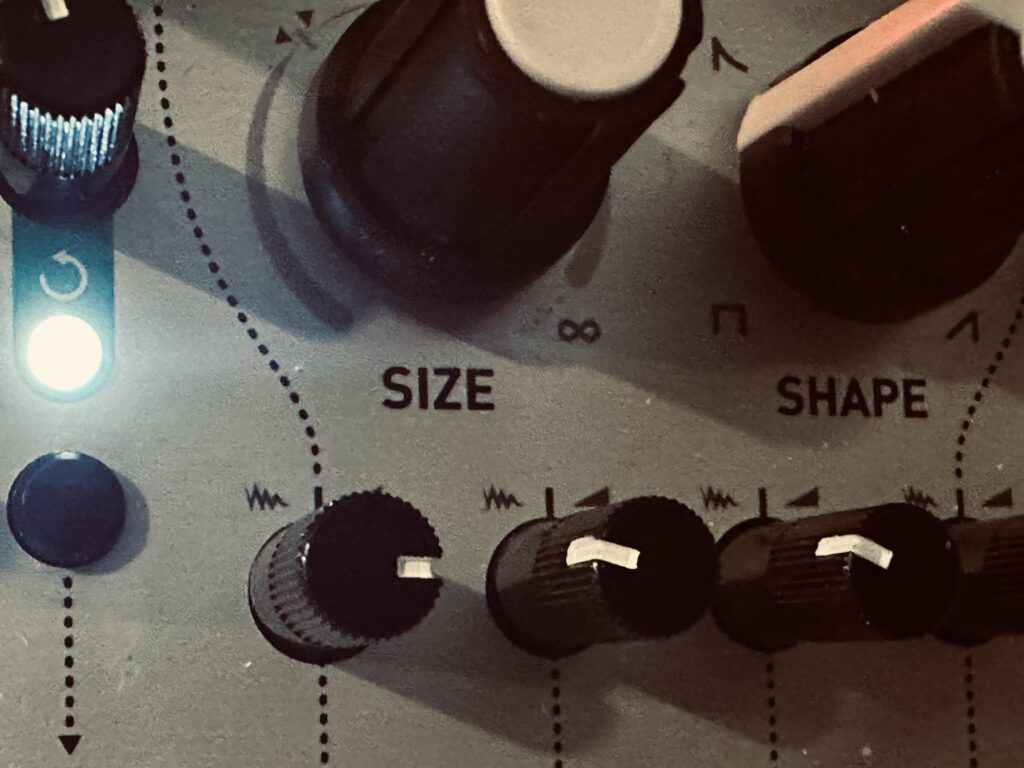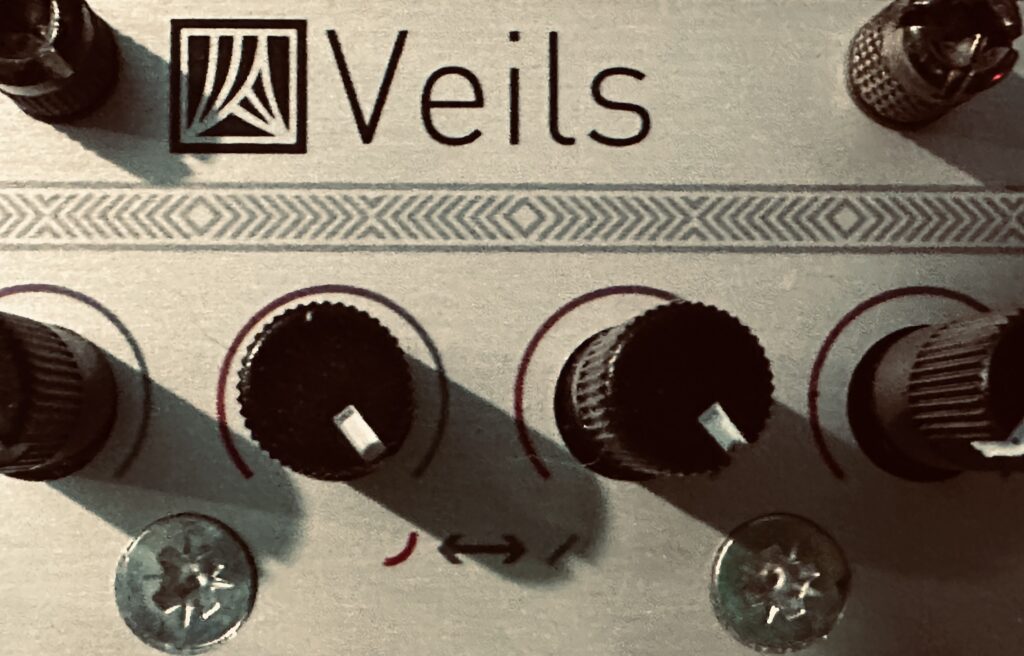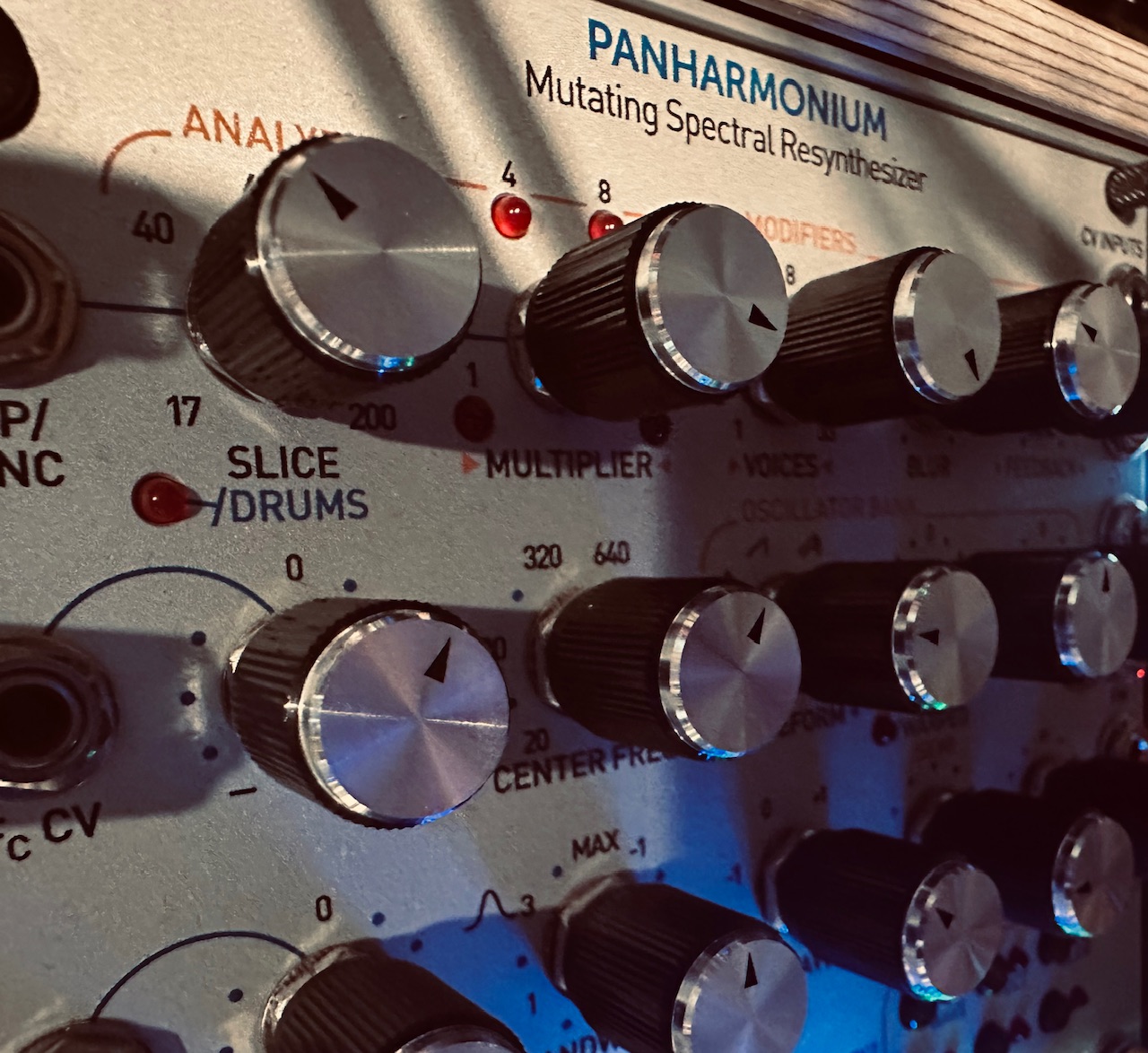I didn’t set out to re-record my latest patch the other day. I was set on using some other sample set in some other way. But there were a few things about my last recording that bothered me a little. I was getting too many pitches that were too high; well outside the zone of what “Low Strings” should be. There were points when way too many colors were being shouted at listeners. The delay was a bit too much. And I wanted to streamline the patch a bit.
I won’t go too in depth on the patch, you can read about the details here, but I did make a few changes that improved the recording substantially….
The most major change I made was to eliminate the Qu-Bit Electronix Nautilus, and use the pair of Echofix EF-X2 tape delays on the string samples. This helped to both fill out the space, while simultaneously cutting away excess in the overall soundstage. Rather than simply repeating notes and phrases, the tape delays lengthened and widened them.
The Panharmonium (introduced at ~2:40) was pitched down an octave, which helped lend some depth. More voices were added, and it was set to analyze a wider spectrum. The Panharmonium, along with the Walrus Audio Slöer (which was also set to pitch an octave down), really added weight to the entire recording. I removed a delay from the Panharmonium’s signal path (previously the tape delays), and allowed it to sing only through the reverb, which was a substantial improvement.
No changes were made to the Dradd(s).
No changes were made to Plaits-does-Robot-Speak except sending it far fewer gates.
Modules Used:
Nonlinearcircuits The Hypster
Nonlinearcircuits Lets Get Fenestrated
Nonlinearcircuits Stochaos
Nonlinearcircuits Triple Sloth
Vostok Instruments Asset
Expert Sleepers Disting NT
Addac System Addac814 6×6 Stereo Matrix Mixer
Rossum Electro-Music Panharmonium
Pladask Elektrisk Dradd(s)
Mutable Instruments Marbles
Mutabke Instruments Plaits
Mutable Instruments Beads
Knob Farm Ferry
ST Modular SVCA
Intellijel Quad VCA
Outboard Gear Used:
Echofix EF-X2
Walrus Audio Slöer
Noisy Fruits Lab Lemon
Improvised and recorded in one take on iPad in AUM via the Expert Sleepers ES-9.
